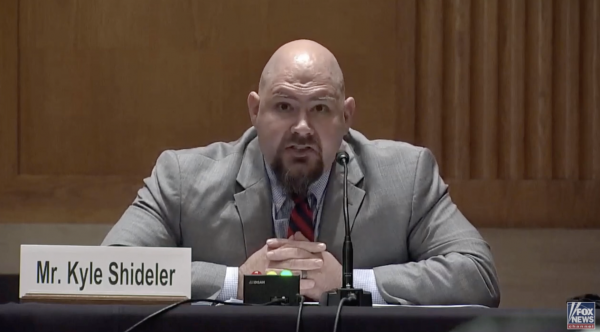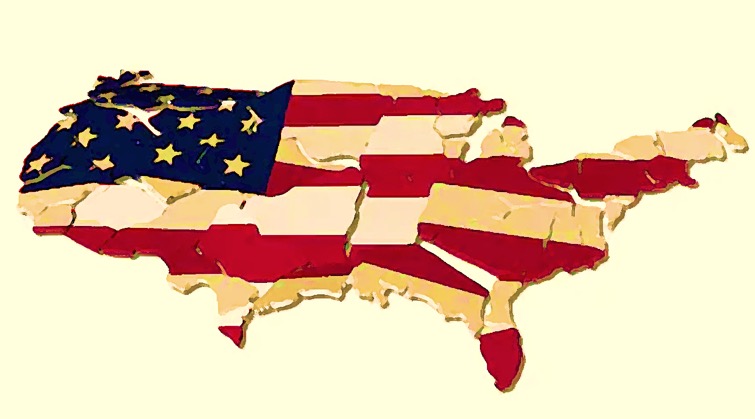Plebiscitary democracy will almost certainly bring much sharper ideological, geographical, racial, and religious divisions.
Antifa: National Security Threat

Remarks before the Senate Judiciary Committee by Kyle Shideler.
What follows is a transcript of remarks made by Kyle Shideler, director and senior analyst for homeland security and counterterrorism at the Center for Security Policy, before the Senate Judiciary Committee’s Subcommittee on the Constitution.—Eds.
It is a great honor to testify today before the Senate Judiciary Committee’s Subcommittee on the Constitution.
The federal government has a fundamental responsibility to protect the civil rights of all its citizens, and paramount among these are the rights of freedom of speech and assembly.
I hope my testimony today will correct some fundamental misunderstandings regarding the nature of the movement known as Antifa, which seeks to deprive Americans of these rights.
Antifa is an anarcho-communist movement, whose goal is to use physical violence and intimidation to terrorize American citizens into disengaging from the political process. While they do this under the cover of “anti-fascism,” the reality is that Antifa define the entire American political system—regardless of party affiliation—as “fascist.”
Antifa developed out of the Communist urban guerilla and terrorist movements of the late 1960s and early 1970s such as the Weather Underground and Germany’s Red Army Faction. As a result, it possesses operational experience developed over more than half a century of radical left-wing organizing and political violence.
Law enforcement has largely failed to understand the nature of this threat. Seeking a rigidly hierarchical organization, some analysts have concluded, against all evidence, that Antifa does not exist in any meaningful sense.
The reality is that Antifa demonstrates an elaborate but non-hierarchical structure.
The most basic structure of Antifa is the affinity group, described by the pro-Antifa website CrimethInc as the “essential building block” of anarchist organization—a small cell of individuals, known to each other, who agree to come together to participate in “direct actions,” including sabotage, vandalism, and premeditated assault.
Affinity groups come together to form clusters, and larger clusters may organize actions using what are called “spokescouncils.”
Antifa “chapters” form at the city level and join regional networks such as Torch Antifa, the largest Antifa network in the U.S., as well as national and international networks.
Antifa websites describe in detail how to organize affinity groups and chapters, how to vet potential members, prevent infiltration, and securely communicate. Such websites play a key role in spreading propaganda, distributing new tactics, techniques, and procedures, and raising calls to action.
One example, the Antifa website It’s Going Down, distributes a “Forming an Antifa Group” manual. Particularly noteworthy: the manual describes Antifa chapters as incurring “obligations” including that of supporting regional and national Antifa networks, who in turn make greater resources available to chapters.
This support extends internationally, with many American Antifa groups linked to the International Antifa Defence Fund, which has provided financial support to Antifa in 22 different countries. While overall dollar amounts are low, the International Antifa Defence Fund represents clear evidence of organizational activity across national borders.
Antifa relies heavily on support organizations such as the Democratic Socialists of America, The International Workers of the World, Refuse Fascism, and the National Lawyers Guild, in coordination with other protest organizations. It is common for Antifa to require outside groups to sign what are essentially “memorandums of understanding” to ensure allies agree not to interfere with criminal activity, in exchange for “protection.”
In terms of financing, remember terrorism is a low-cost form of warfare. The entire 9/11 plot cost less than half a million dollars and even by al Qaeda standards, Antifa’s low-intensity violence is extremely cost-efficient.
Members are expected to provide their own gas masks, shields, helmets, and weapons to assault opposing demonstrators or police. Even the use of lasers, corrosives and small explosives are low-cost. Making a Molotov cocktail costs less than 25 cents.
Antifa uses a variety of methods to fundraise, including crowdfunding technology. The International Antifa Defense Fund has so far raised more than $53,000 via the crowdfunding site Fundrazr. While some crowdfunding companies are officially content-neutral, others are explicitly ideological, and only facilitate Antifa and similar fundraising projects.
Individual Antifa chapters frequently raise funds through event admission fees, cash donations and by selling merchandise at anarchist bookfairs.
Many of Antifa’s needs are provided free of charge by allied organizations.
Support organizations host and provide armed and unarmed training for Antifa members at no or low cost. Support organizations cover most major expenses such as transportation, bail, and lawyers’ fees.
Other organizations such as Riseup.net provide Antifa chapters with free access to secure servers, communication tools, and applications.
Far from non-existent, Antifa possesses as elaborate a structure as any criminal conspiracy or terror group.
Claiming Antifa is too “disorganized” to understand is not an acceptable excuse for law enforcement—federal, state or local—to tolerate Antifa’s private street war to overthrow the Constitution.
Like their predecessors in the Weather Underground and Red Army Faction, Antifa will continue to escalate its behavior unless it is checked.
There will be more attacks, and violent rioting techniques will continue to grow in capability and sophistication. Their cadres will grow. They will align with other disaffected forces, as they have done so far. There will be more autonomous zones, for increasing periods of time.
And more Americans, of all political persuasions, will be terrorized.
The American Mind presents a range of perspectives. Views are writers’ own and do not necessarily represent those of The Claremont Institute.
The American Mind is a publication of the Claremont Institute, a non-profit 501(c)(3) organization, dedicated to restoring the principles of the American Founding to their rightful, preeminent authority in our national life. Interested in supporting our work? Gifts to the Claremont Institute are tax-deductible.
Capitulation and cowardice hand America to identitarian propagandists.
Now what?
Bostock demands a complete change of course from neutered judicial “conservatism.”
Don’t let the commies win.
The riots reveal the revolution.






